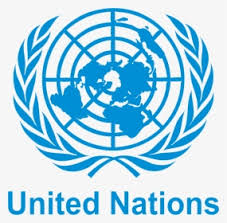In several stories, I’ve highlighted a little-known tendency of United Nations agencies: Fabricating data that doesn’t exist and passing it off as real. (UNESCO calls this process imputation, which sounds nicer — but only because most of us don’t know precisely what it means.) Two examples:
In 2011, the U.N.’s Food and Agriculture Organization said there had been 833.2 million undernourished people in the developing world in 1990. This was a problem not only for those who were hungry, but also for the United Nations, which had set a goal of cutting the hunger rate in half by 2015. But the most recent FAO data found 838 million undernourished people – the number had actually increased since 1990. What to do? The FAO decided – 20 years after publishing them – that the 1990 figures had been wrong. The next year, it announced that undernourishment in 1990 had actually been not 833.2 million, but 980 million. That 18% jump, plus a few more data changes, arrived just in time to make it look like hunger was falling, and thus that the U.N. was close to meeting its goal.
UNESCO, official keeper of U.N. education data, publishes detailed statistics for each region of the world – for example, it gives gender parity data for secondary-school students in sub-Saharan Africa. But it has actual data for only 4 of these 47 countries (and arguably not even good data). For the other 43 countries it made a guess, added them up, and produced a regional average which is of no use for anything, except to prevent a chart from looking empty.
Why are these U.N. agencies so eager to fabricate statistics?
In the case of the hunger data, it’s obvious: The U.N. was desperate to show that its Millennium Development Goals (MDGs) were a success. The FAO, perhaps reluctantly, produced the needed numbers.
Couldn’t they simply have said that it’s not possible to accurately count the undernourished people around the world? Couldn’t UNESCO say, “We don’t have enough data to calculate regional averages for Sub-Saharan Africa”?
They could, so let’s look at why they don’t. Data from the past is valuable if it helps us make better decisions for the future. But that’s not what this data is about. Revised 20-year-old hunger statistics won’t help us plan tomorrow’s food policies. Nor will UNESCO’s flimsy regional averages help make school policy.
This data is about control. The U.N. wants to be the global database for numbers related to development. To fill that role, it must produce numbers. And why does it want role? Several factors are at work.
Control of the data. By collecting and publishing so much data, the U.N. discourages others from doing so. That’s important. The U.N. does not merely compile and publish statistics produced by national governments, it processes these numbers along the way. Thousands of decisions are made regarding which numbers are seen, which are not, how they are combined and weighted… and when to toss out old data and recalculate it. Had a disinterested agency been the data-keeper, it seems highly unlikely it would have decided (again and again!) to recalculate the old hunger data just in time for the U.N.’s MDG report.
Keeping attention on the SDGs. After dishonestly claiming great success for the MDGs from 2000-2015, U.N. officials got the General Assembly to pass the Sustainable Development Goals, which push Western priorities to the forefront for another fifteen years.The U.N. wants the world focused on these goals, pouring money and attention into them. But who watches the ballgame if there’s nobody announcing the score? Showing progress along the way (typically with statements like, “We have accomplished great things, but there is still much to do”) requires statistics.
An illusion of expertise. The U.N. has become the go-to source for a wide range of global statistics. That increases its standing as the go-to source for wisdom on how to interpret all this information, and what to do next.
Deciding what gets measured. Twenty years ago, the U.N. chose to define “education” as school enrollment, regardless of whether students learn anything. Within five years, it was clear to many observers that this was a big mistake. But the U.N. didn’t need to listen or change. It chose to remain focused only on enrollment, not on learning.
It’s a job. The people who compile, massage, and report these statistics want to keep their jobs, and will go to great lengths to justify their work. The UNESCO Institute for Statistics has announced an “an urgent need for … more resources for data collection and analysis.” But we today have more education data than ever before in history, and schools in developing countries are getting worse. Data is not what’s missing.
karmacolonialism.org



